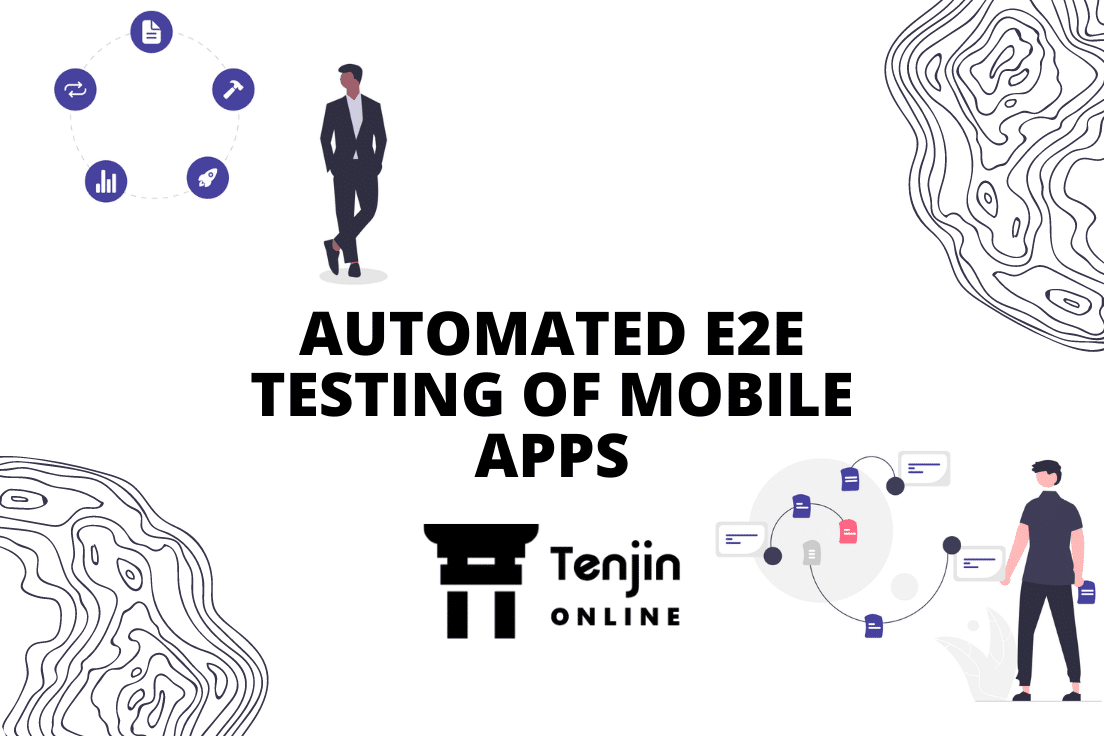
The evolution of testing has been tremendous in recent times, giving rise to various new techniques to improve the effectiveness of the testing process. One such technique that has been proven extremely beneficial is the end-to-end testing, otherwise known as E2E testing, which tests the entire application from start to end and ensures that there are no discrepancies across the workflow, and everything works as expected.
E2E testing is considered to be mandatory in the app testing process as it tests the features, functionalities, performance, working of integrations, and all other aspect throughout the process. It evaluates the app for user readiness and ensures that it performs well in the market by engaging more and more users.
App development is a complex process with various systems and subsystems connected in a critically sensitive manner; even a minute discrepancy or collapse can severely affect the end result. Hence, end-to-testing is implemented to avoid such scenario. Let’s learn more on the significance of E2E testing and why automating it is important.
Everything you should know about end-to-end testing
App testing process is a complex affair that involves testing of all critical aspects of the app, E2E testing cannot give accurate results when performed manually. Manual E2E can be tedious and time-consuming, while its complexity will lead the tester to create inconsistent results. Hence, E2E testing is automated to speed up the testing process, get expected results, reduce cost and effort, and improve the turnaround time.
The main reason to implement end-to-end testing is for:
- Creating apps as per users’ expectations
- Evaluating the app for all its components and ensure they are working as expected
- Increasing test coverage
- Reducing time and effort, while increasing productivity
End-to-end testing involves evaluating all the parameters of an app; hence, it eliminates the occurrence of any risk that can cause app failure. This approach prepares the app for the real-world and ensures that the users have an enjoyable experience.
Significance of E2E (end-to-end) testing
End-to-end testing is a mandate for app testing, which ensures to maintain the quality of the app. There are multiple reasons to implement E2E testing, some of the significant ones are:
Improved accuracy: End-to-end testing interferes at all levels of the app to ensure there is no defect in the system. It helps to identify any error in the system and gives scope to fix them, this approach allows to get accurate results, every time.
Reduced risks: As end-to-end testing involves testing of every sprint, from beginning until the end, it identifies all the errors in the system. When the app is released with minimal/no errors, it eliminates the chances of risks that could be associated with the defects. Hence, end-to-end testing reduces/ eliminates the occurrence of any future risk.
Early defect identification: End-to-end testing is performed by testing the app from start to finish, and often conducted simultaneous to the development process. When apps are tested alongside development, it eliminates the errors before moving on to the next phase, which would prevent it from causing significant damage in the further stages. Hence, early error identification is an important aspect to reduce reworks, and save time and effort.
Reduced time-to-market: End-to-end testing allows early error detection and eliminates the rework scenario, thereby allowing early product deployment and delivery. This reduces the overall time-to-market tremendously, while ensuring that there is no compromise on the quality.
Increased test coverage: By implementing end-to-end testing, system evaluation in conducted across different layers and sub systems, this expands the test coverage and produces efficient test results.
Reduced time and cost: Automating end-to-end testing will reduce the occurrence of errors, that will eventually reduce the number of revisits to test the app. As the reworks and revisits are reduced, the product is deployed faster than expected. The reduced time and quicker product deployment saves significantly on the cost too.
Decreased repetitive efforts: Automating end-to-end testing ensures that the developed app is performing as expected. This reduces the occurrence of errors and frequent revisits to test and fix them. Automating will reduce the effort that goes in the repetitive tasks and ensures the app is working without investing much time and effort in testing it over and over again.
Conclusion
End-to-end testing is an essential part of any app testing process that cannot be neglected. It helps organizations scale up their business by creating perfectly performing apps that work well across all browsers, platforms, and devices, while ensuring all features and functionalities are working as expected. Automating the E2E testing has helped organizations achieve accurate, faster results.
Performing end-to-end testing prepares the app for the early release, while eliminating/ reducing the occurrence of risks. It drives quality across the pipeline, reduces release cycle, and ensures a seamless user experience. E2E testing is one of the important testing practices that forms the core of quality assurance process of any organization.
Tenjin Online for E2E app testing Tenjin Online is a SaaS-based, codeless test automation platform that has the ability to perform end-to-end testing of web and mobile apps. Its intuitive and self-documenting approach for non-programmers reduces skill dependencies and the overall turnaround time, while frequent regressions ensure to test the app all over again to check for errors during new integrations or code changes. End-to-testing, test management, defect tracking, and defect management are made easy with Tenjin Online; it ensures that the app’s functionality, performance, UI, and UX are all performing as expected.
Leave a Reply
You must be logged in to post a comment.